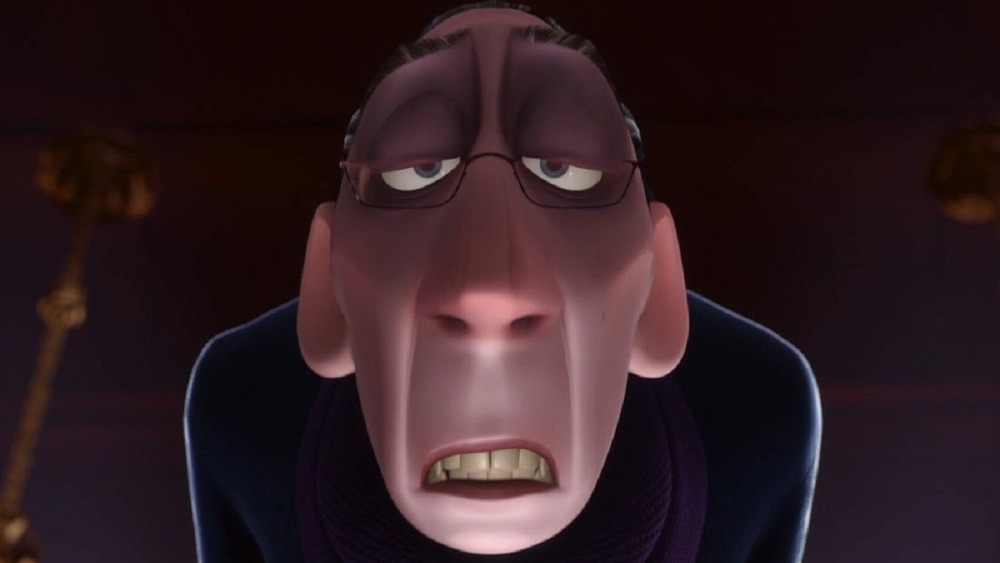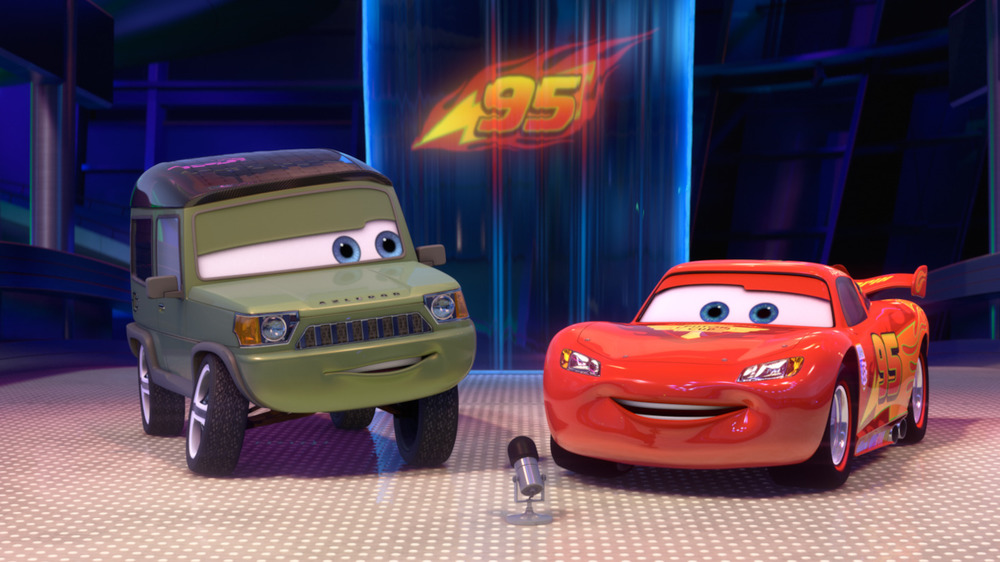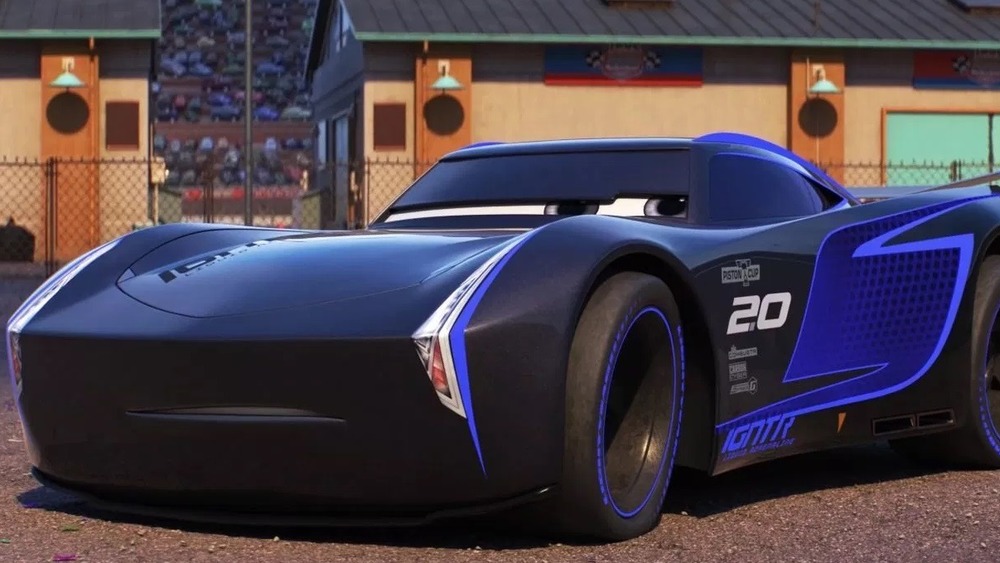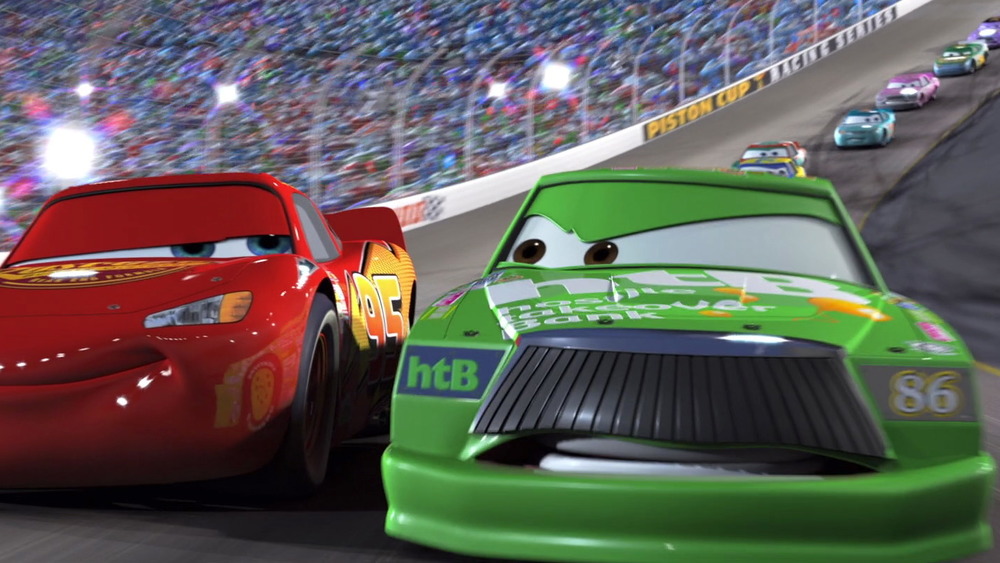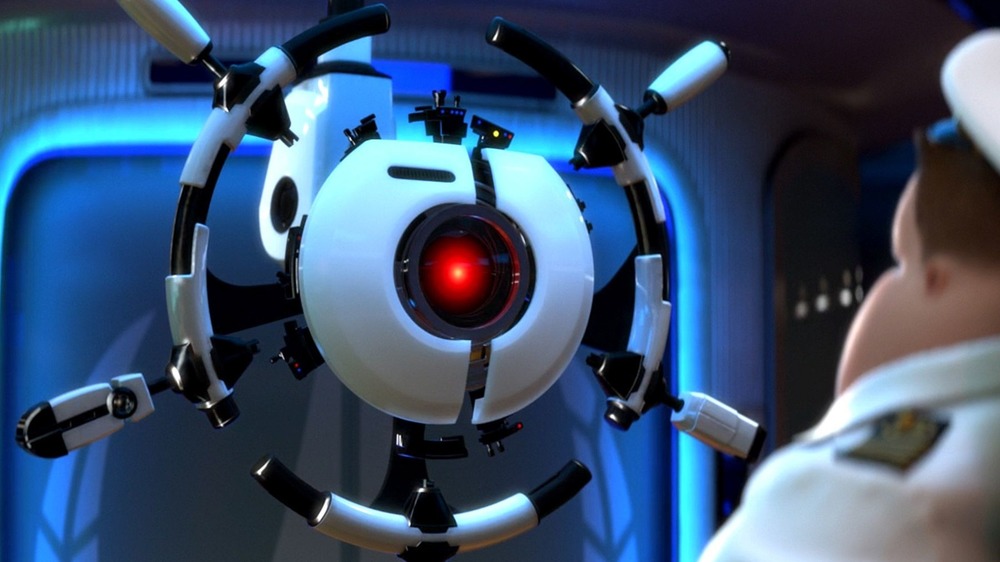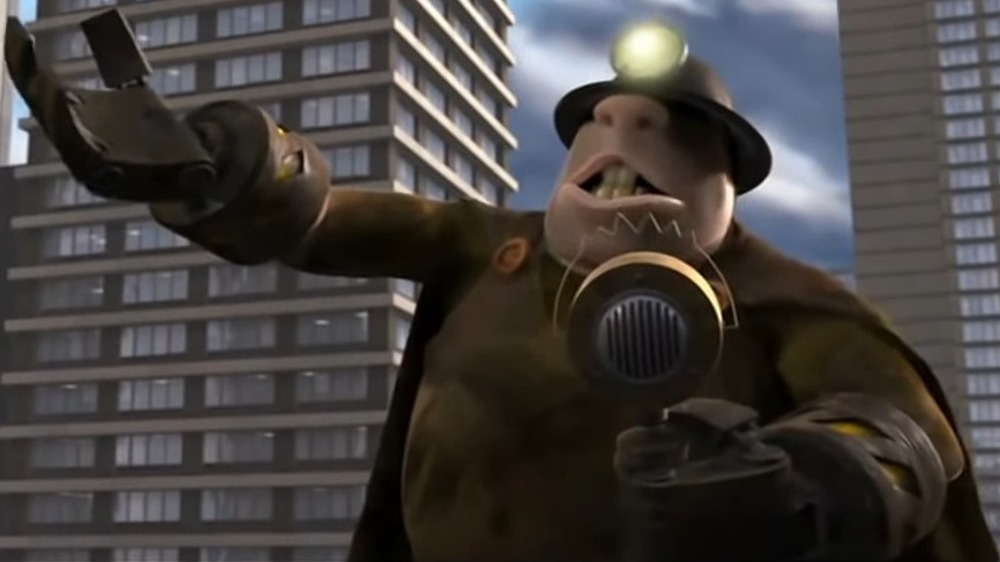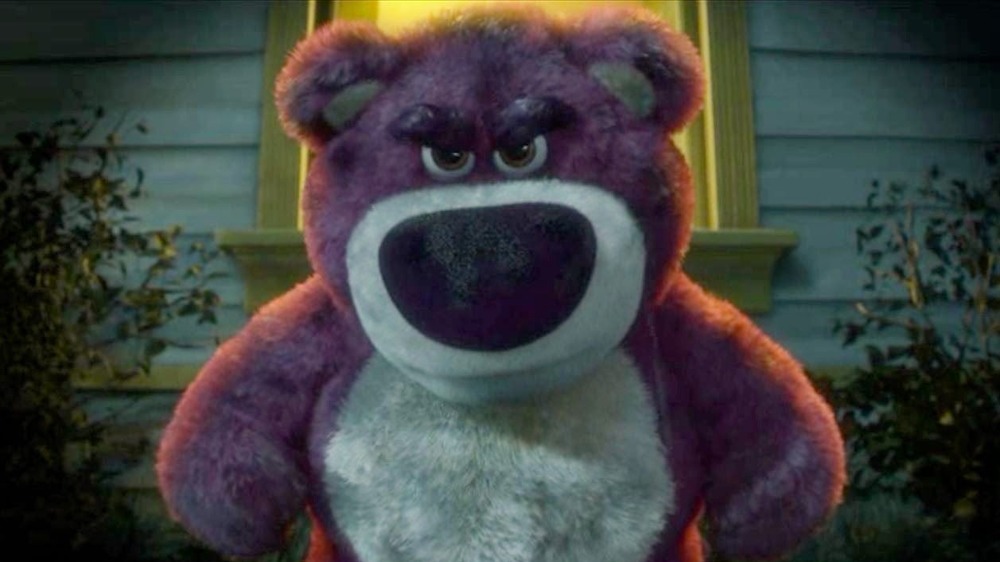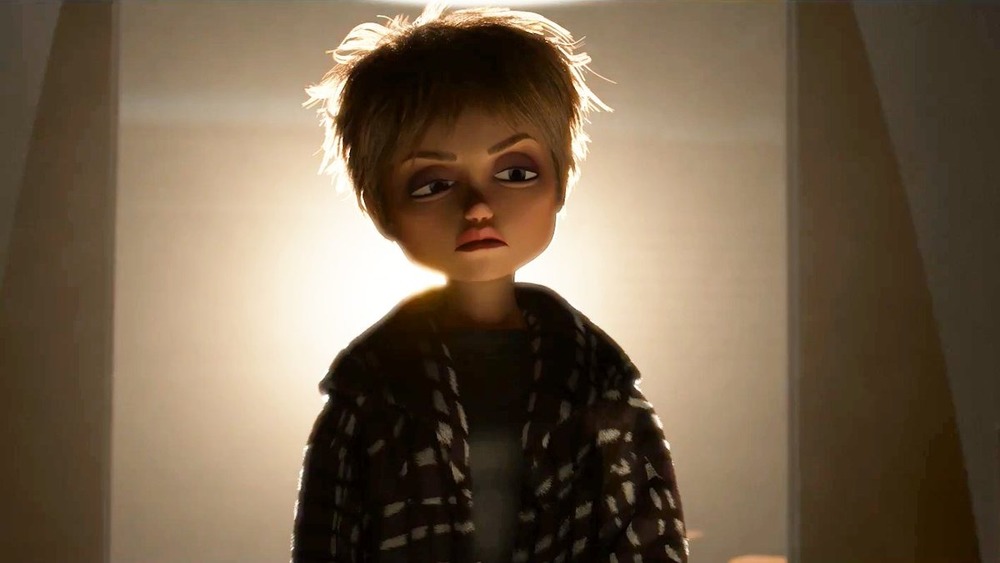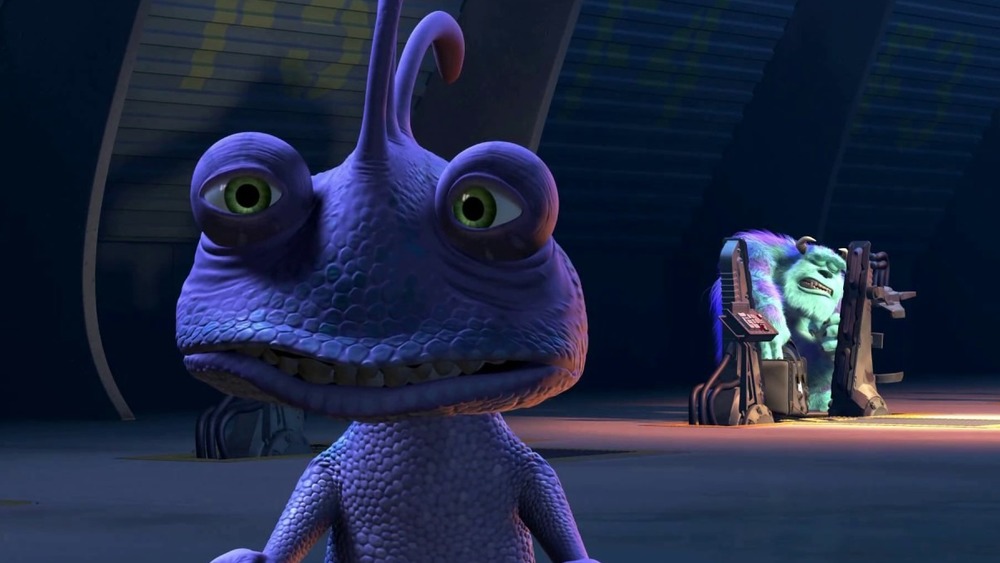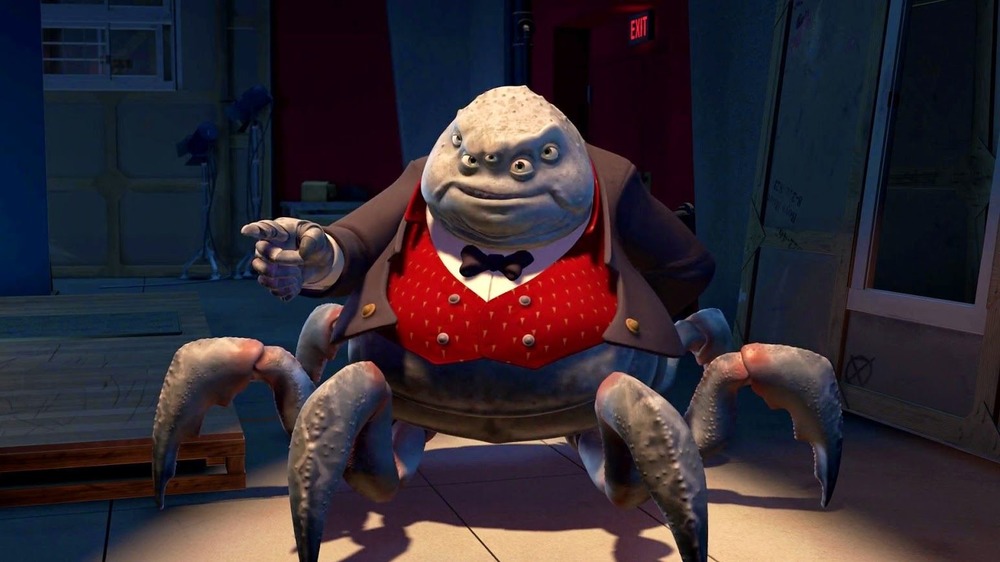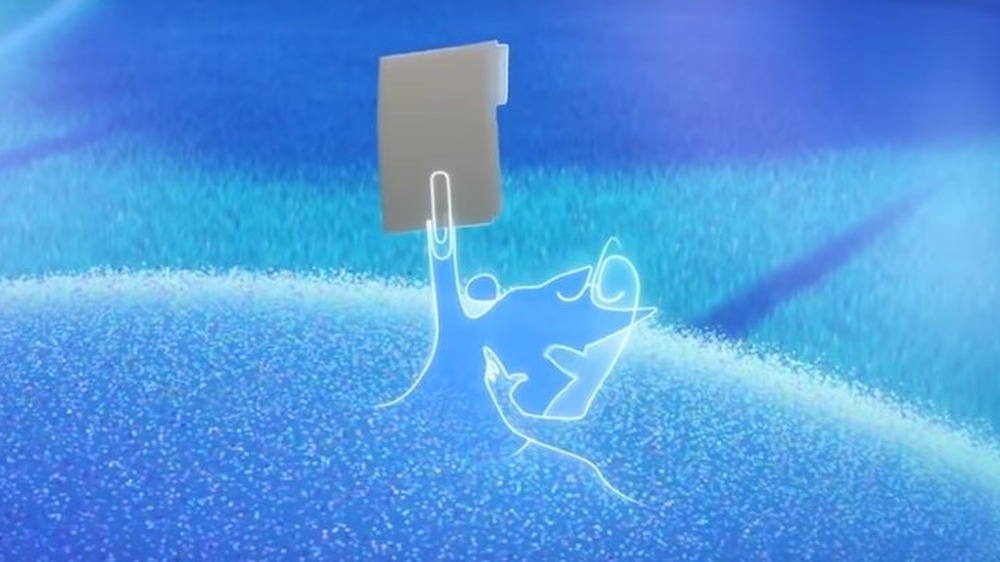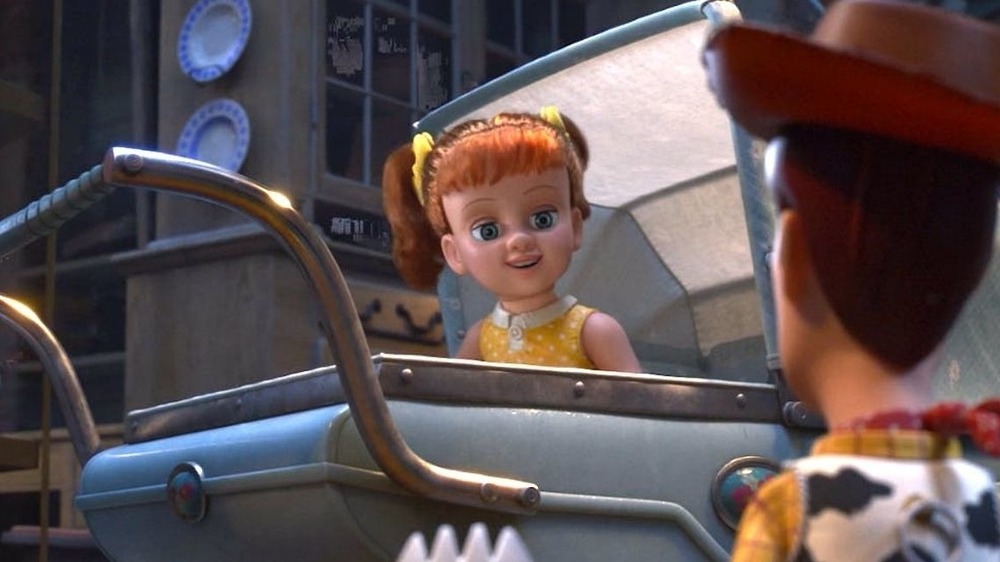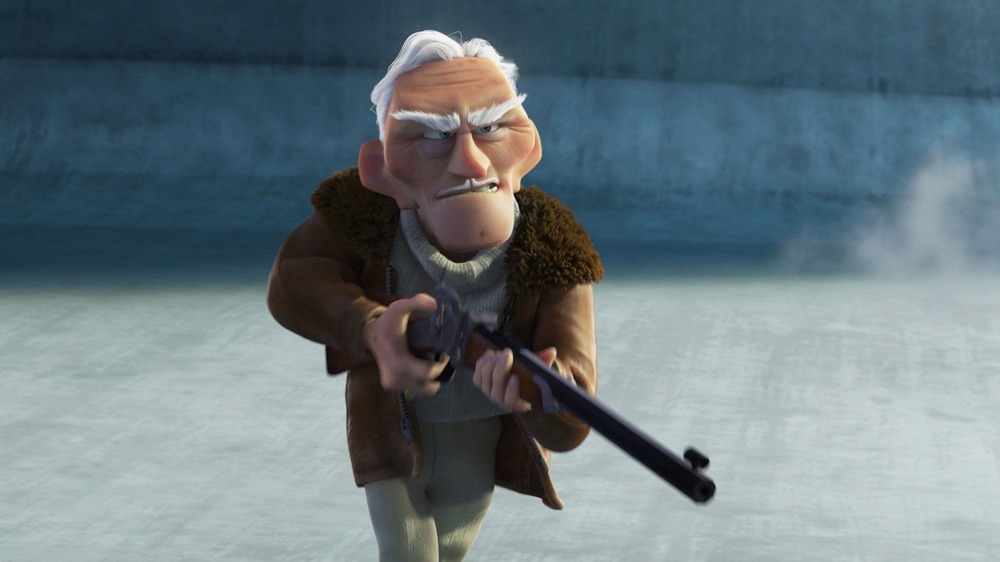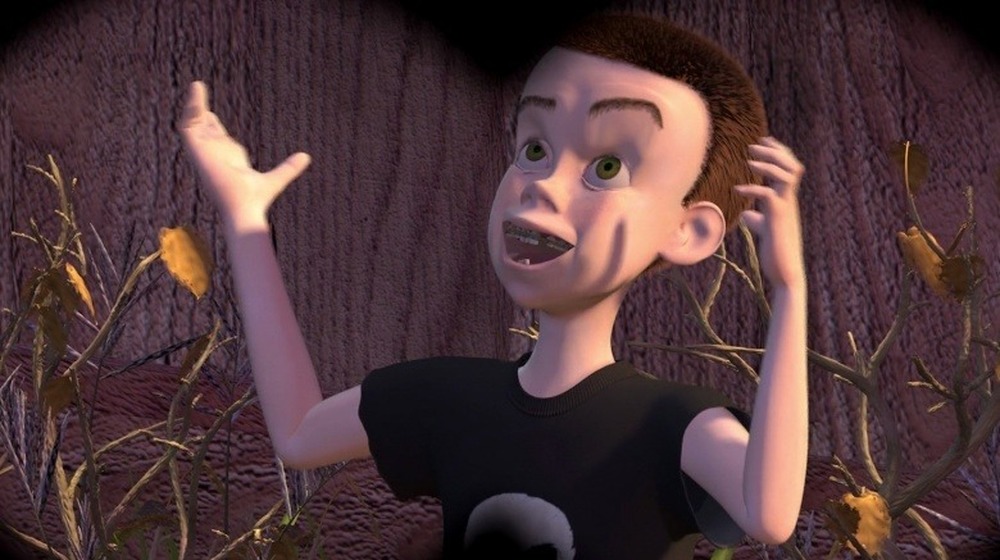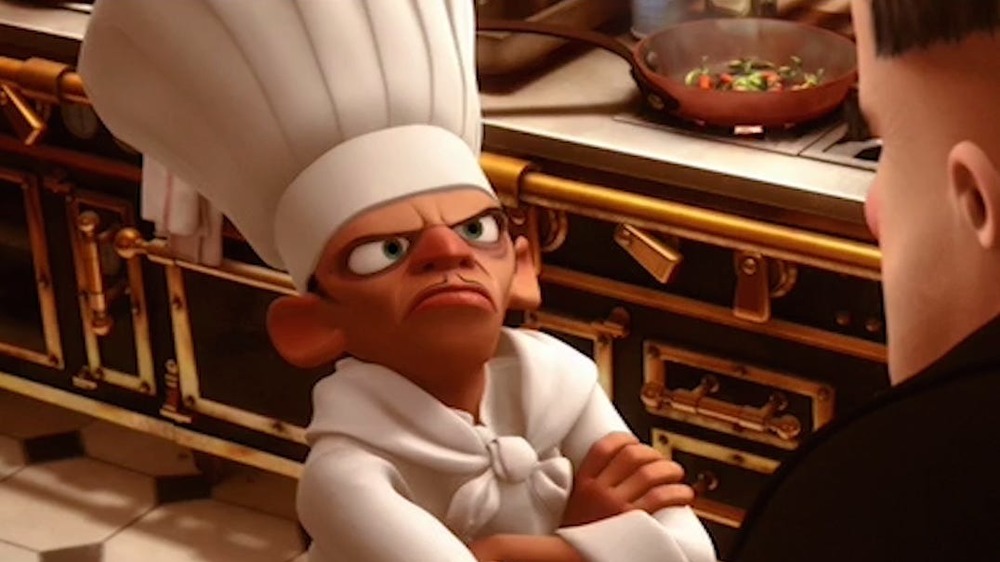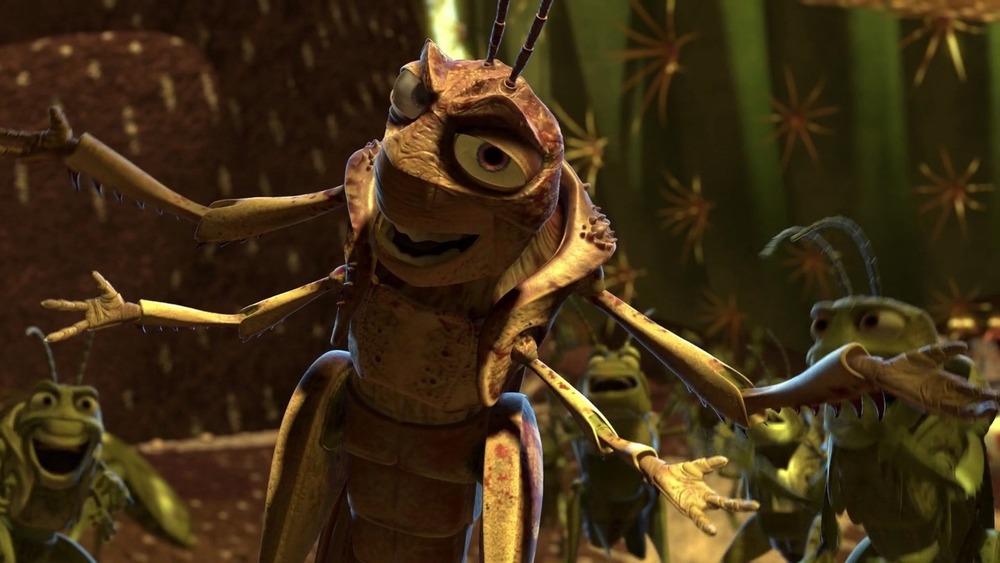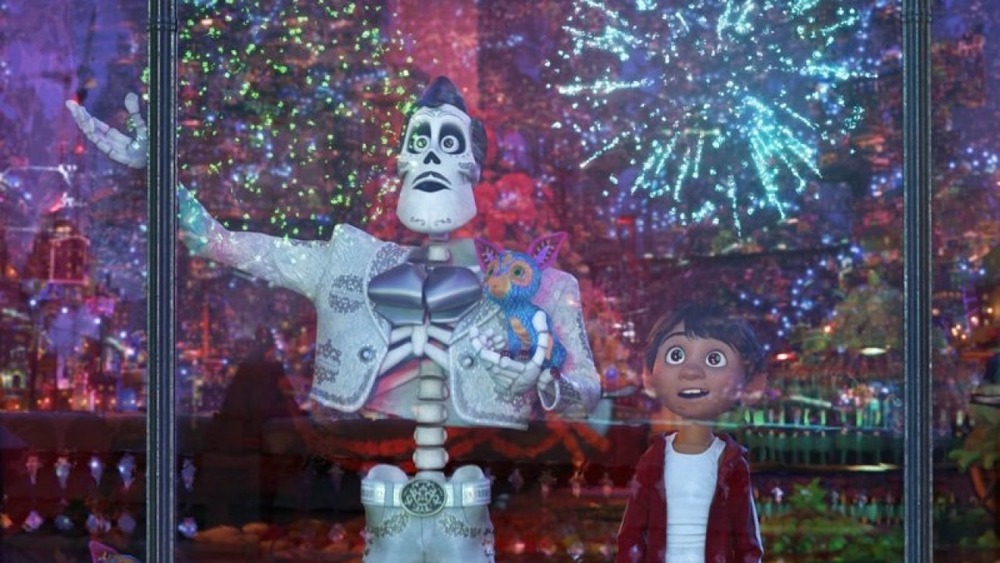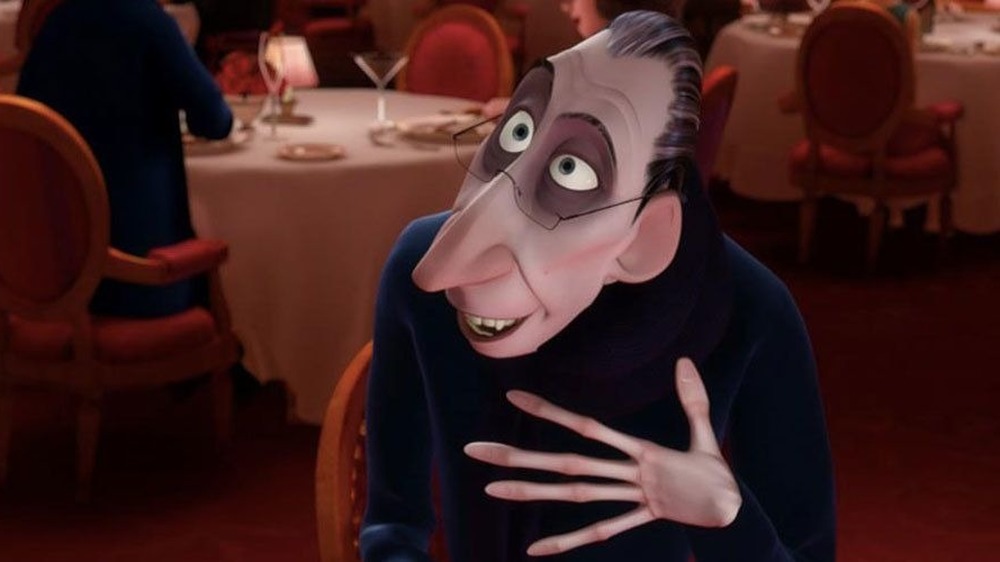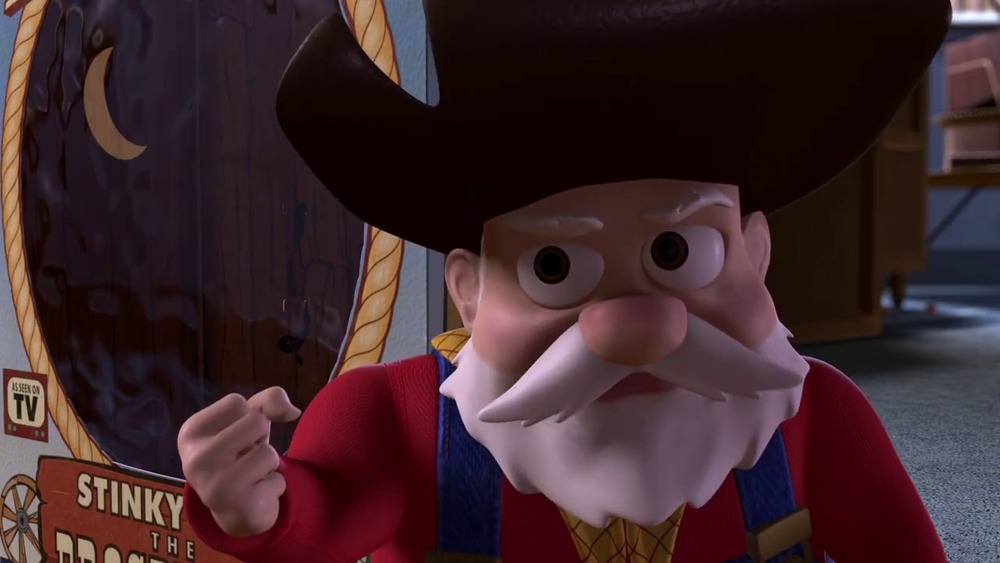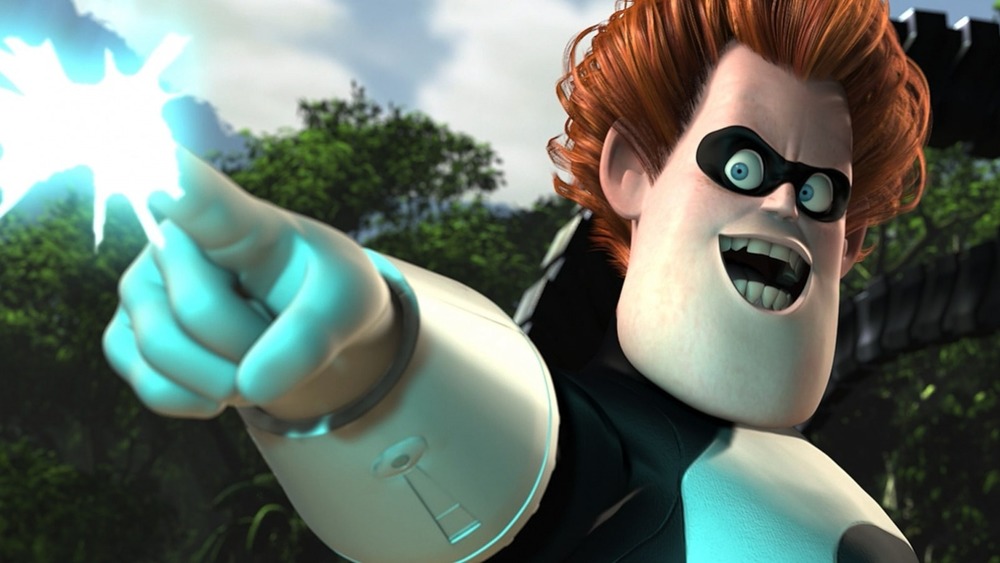Pixar Villains Ranked Worst To Best
The geniuses over at Pixar have been pioneers of storytelling for well over two decades now, and that extends to the vast array of characters they've created for their award-winning films. In their quest to make intelligent, well-crafted features for the whole family, these animation writers and directors have invented a brilliant set of protagonists to take charge of each story. And of course, they've also dreamed up some formidable villains to make things difficult for our beloved heroes.
From arrogant race cars and misunderstood critics to sheer, outright supervillains, the world of Pixar villainy is one filled with humor, deviousness, and some of the strongest nemeses to ever shine upon the silver screen. But in fairness, there are also a few baddies who probably won't stand the test of time. So come journey with us to infinity and beyond because we're here to give you our comprehensive ranking of every Pixar villain from worst to best!
Miles Axlerod is probably Pixar's worst villain
If you were to wander through the countless Pixar film ranking lists throughout the internet, nine times out of ten you'll find the childishly obscene Cars 2 hanging out right at the bottom of the pack. You won't find much disagreement here, and that general distaste for this poorly crafted sequel in Pixar's inexplicably popular Cars franchise extends to the film's main villain, Miles Axlerod, a hotshot moneybags car voiced by Eddie Izzard.
Axlerod — a character constructed as some kind of Richard Branson automobile-equivalent — carries with him the fate of the Cars-iverse, as his plan to use his fake environmentally friendly fuel to achieve world domination can only be stopped by, who else, that lovable tow truck known as Mater (Larry the Cable Guy). The laziness in the plot and lack of any enjoyable humor at any moment is perfectly represented in Axlerod, a facsimile of the type of villain that's been portrayed in far superior films than this one.
Thunderclap is easy to forget
Simplicity can definitely be a good thing on occasion, but when it comes to Pixar villains, the simple approach can sometimes mean a character's ultimate downfall. Take Thunderclap, for example, a not-so-nice pterodactyl who, given the few other options present in this prehistoric adventure, acts as the de facto villain character of Pixar's cinematic runt of the litter, The Good Dinosaur.
Thunderclap, voiced by Steve Zahn, is a deranged, wise-cracking beast that leads a pack of fellow storm-chasing pterodactyls in their quest to try and eat Arlo the dinosaur's human companion, Spot. That's really it, honestly, which leads to Thunderclaps low position on this list, a character so forgettable partly because of his lack of any real powerful motivation within the world of The Good Dinosaur. Outside of a few deranged inspired line readings here and there, Thunderclap leaves little to no impression in an already forgettable entry in the Pixar canon.
Jackson Storm definitely doesn't finish first
The Cars films, as financially successful as they were, really don't represent a huge artistic zenith for Pixar in general. Starting from an inherently ridiculous premise (you could fill a book with the number of questions we have about the logic and rules of a universe where everyone is an automobile) and then adding a mix of stock characters whose charm wears off pretty quickly, this trilogy was never one that was going to grip the imagination of Pixar fans for too long.
And that's a shame because Cars 2 wastes the potential of bringing Armie Hammer into the Pixar world to voice Lightning McQueen's latest rival, Jackson Storm. Utilizing the inherent braggadocio that's so common in Hammer's best work only goes so far for a character whose primary function is to just take the slot of the film's big bad, with not much else to work off of.
Michael Keaton makes Chick Hicks ... not awful
The Cars cinematic universe is majorly wanting when it comes to major baddies, but perhaps the least terrible of these vehicular villains is Chick Hicks, Lightning McQueen's initial rival, voiced by Michael Keaton. As Lightning rests up and recovers in the small town of Radiator Springs, it's Hicks' jerkish nature that gives McQueen the constant motivation to take him on in the film's final race centerpiece. And to give Keaton the credit he most definitely deserves, he certainly gives it his all here as the arrogant race car whose only glory can be found in a racing trophy.
Though still occupying a simple, archetypal antagonistic role against Lightning McQueen, Chick Hicks comes equipped with a memorable design (that green paint job with the mustache is priceless) and a quippy-enough performance from Keaton to make his presence as enjoyable as it can be within the trappings of a film about talking cars.
AUTO is more Easter egg than actual character
A big problem that often besieges Pixar is when the studio is forced to create a villain character for a film that doesn't really need one. For example, take WALL-E, justifiably considered one of Pixar's out-and-out masterpieces. It's a deft mix of silent comedy, stunning visuals, and stellar sci-fi elements that coalesce into the cutest love story between two robots you've ever seen.
The film positions AUTO, the starship Axiom's autopilot software, as the antagonist, whose programming instructs it to stay the course and not let anything get in its way, not even the chance to try and save Earth. AUTO is certainly a fine means of creating conflict in the final act of the film, and his sole red eye (a fun 2001: A Space Odyssey homage to Hal 9000) creates a pretty cheeky sci-fi Easter egg, but when it comes to ranking Pixar villains, this machine is best seen as more of a plot device than a fully fleshed-out character.
The Underminer loves taking digs at the Incredibles
The only character on this list voiced by Pixar's "good luck charm," John Ratzenberger, the Underminer is some form of mole man living beneath the city streets of Metroville. And he provides the perfect cap to the first Incredibles film, teeing off yet another villain for our super family to face off against together. His cliched monologuing about reemerging from the depths of the city to take his revenge is right out of the classic villain textbook, and Ratzenberger provides him with enough humorous gravitas to turn him into a memorable minor bad guy.
Thankfully for all of us, the Underminer digs right back into things in the opening of Incredibles 2, the sequel that picks up literally moments after the end of the first film, with the Parr family locked in combat with the devious mining foe. His clever design, kooky backstory, and altogether mischievous nature makes for a fun villain that only needs a moment to capture your attention.
Lotso is a worthy (and scary) Pixar villain
Arriving over a decade after its previous stuffed successor, Toy Story 3 had a lot to live up to, as the franchise had already been deemed a cultural classic. And that same pressure was on its villain, Lots-o'-Huggin' Bear (Lotso for short), voiced by Ned Beatty. Fortunately, just like the film, Lotso exceeded expectations.
Lotso is positioned as the kindly caretaker of the Sunnyside Daycare collection of toys, only to be revealed as a cruel and dictatorial ruler, making his fellow toys suffer so that he can remain in power. As his backstory reveals, Lotso was abandoned by his previous owner, and if he can't get love and affection, then no toy can. Even if his routine is something of a new spin on the familiar villainous arc of Toy Story 2's previous villain, Stinky Pete, Lots-o'-Huggin' Bear is still a wonderfully designed, instantly memorable character that brings an air of cuddly menace to the Toy Story universe.
Evelyn Deavor is a worthy foe for the Parrs
If you can trust the Incredibles films to have anything, it's going to be exciting, successful villains, and the long-awaited sequel to Brad Bird's acclaimed film delivered just that with Incredibles 2's devious and overlooked Evelyn Deavor. Voiced by Catherine Keener, Deavor is one of the two heads of the DevTech telecommunications company, with her brother Winston (Bob Odenkirk) taking on the face and branding of the company, leading Evelyn to deal with the actual technology at play.
But Evelyn, still bearing a grudge against supers for the death of her father, uses her technology to take down the superheroes and turn society against them through an act of violent hatred. Even if it's messaging gets a tad muddled near the end of the film and her true villainy isn't as much of a shock as the film wants it to be, Evelyn is still a noble villain for the Parr family to face in this most wonderful super sequel.
Randall Boggs is one of Pixar's creepiest bad guys
In the highly competitive world of Monsters, Inc., where monsters face off against each other to see who can get the most screams from unsuspecting children, every hero — in this case, the hairy James P. Sullivan (John Goodman) — needs an even scarier villain. And we get that, and then some, with the film's scariest creature of all, Randall Boggs. The terrifyingly slimy, scaly monster (Steve Buscemi) is designed to terrify adults and children alike, with his chameleonic abilities providing him the means to both sneak and scare to his delight.
While we learn later in the film how he's not the only villain to be found in the hallways of Monsters Incorporated, Randall is most certainly the most memorable of the bunch when it comes down to it, and his competitive nature and general creepiness are both huge parts of that.
Henry J. Waternoose is the one pulling all the strings
With all our eyes focused on the menace of Randall Boggs, few would suspect the CEO of Monsters Incorporated, Henry J. Waternoose (James Coburn), was the true mastermind behind the devious plan at the center of Monsters, Inc. Waternoose, in fear of the scare shortage plaguing Monstropolis, turns to nefarious means of trying to potentially murder children in order to provide enough screams to fix their energy crisis. Luckily, Sully and Mike (Billy Crystal) are able to work together to take down their frightening boss.
With enough paternal energy to convince you of his saintliness but with a creepy, bug-like design that only becomes more menacing as the film progresses, Waternoose is a classic example of a villain who thinks he's doing what's right. And he leaves a memorably terrifying mark in a film filled with too many memorable moments already.
Look out, Terry is on the hunt
With Soul focusing more on existential peril than traditional movie threats, the film is forced to create some sort of antagonistic force for our central characters to bump up against. So, enter Terry, the otherworldly being voiced by Rachel House (Thor: Ragnarok, Hunt for the Wilderpeople), who seems to be the only one in the Great Before who makes us feel a sense of dread or anxiety.
Terry is the accounting-obsessed entity who's on a mission to find out why "the count" is off in the afterlife. That involves hunting down some runaway souls (Jamie Foxx and Tina Fey) and bringing them back to follow the order of the universe. While filling a gap that maybe wasn't necessary for this kind of spiritual storytelling, Terry's humor, aesthetic, and all-around adventurous aura makes her a more than memorable component of this soulful piece of entertainment.
Gabby Gabby is a sinister yet sympathetic Pixar villain
Another visit to the world of toys was inevitable, and Toy Story 4 – the final adventure in the Toy Story saga — was able to rise to the occasion with not only the lovable Forky but also a new villain. We're talking about Gabby Gabby (Christina Hendricks), who turned out to be a complex and terrifying (in her own charming way) character.
Gabby Gabby, an old-fashioned doll with a broken voice box, just wants to be played with, and she knows that Woody's voice box is the only thing that stands in her way of finally being picked off the shelf from the antiques store. It's this ultimate desire for affection (and its emotionally resonant aftermath) that brings her up so high on this list. Perhaps that's a surprise to many, but it's just as surprising that the fourth entry in this long-running saga could still wring tears out of our eyes.
Charles Muntz is one obsessed adventurer
Adventure is certainly out there in one of Pixar's most memorable films, Up, when Carl Fredricksen (Ed Asner) comes face to face with his childhood hero turned arch-nemesis, Charles Muntz (Christopher Plummer). Muntz is one of the world's greatest explorers, who went missing on the search for an elusive creature deep in the jungles of South America. It's only when Carl and his new pal, Russell (Jordan Nagai), happen upon this creature, the colorful bird known as Kevin, that Muntz's kindness turns to menace and Carl's greatest inspiration quickly turns into his greatest threat.
Obsession is a powerful theme in Up. Muntz's dark and twisted obsession leads him down a dangerous path with a legion of talking dogs, and it's also what ultimately leads to his downfall. A classic villain in a classic performance, Muntz is the perfect villainous foil for this daring and emotional adventure.
Sid was Pixar's first villain ... and still one of its best
Oh, Sid Phillips. Poor, misunderstood Sid Phillips. Toy Story, Pixar's feature-length premiere, wants you to believe that Sid — an extremely creative child who expresses himself through highly imaginative Frankenstein-esque toy operations — is some kind of terrible, evil person. He wears shirts with skulls on them and rides a skateboard, so clearly Sid is a monstrous young adult who's not to be trusted.
Leaving aside the fact that Sid has no idea the impact he's having on these assumed-to-be-inanimate objects until they rise from the ground to traumatize him, Sid is the complete opposite of the charming, playful, all-around joyful Andy from across the way. Where Andy sees toys as perfect objects to be played with in pristine condition, Sid sees them as blueprints for his own array of experimentation. And even though Sid is positioned as Woody and Buzz's worst nightmare, there's still something charming about his own unique version of playtime.
Chef Skinner is one angry little chef
In Ratatouille, who knew that it would be another chef who'd try to bring Remy's ultimate downfall? A pint-sized cook filled to the brim with vile and menace, Chef Skinner (Ian Holm) is the snobbish, commercial head chef currently running the late Gusteau's (Brad Garrett) restaurant (terribly, mind you), and he stands as the only person in the way of Linguini (Lou Romano) taking over as the rightful blood heir of Gusteau's legacy.
With Skinner's sights set on using the Gusteau name to brand a collection of frozen meals, his love of food has turned to, well, absolute trash, and no long-lost relative of Gusteau (or bipedal rodent) is going to get in the way of that. Luckily for us, a certain rat chef (Patton Oswalt) is just a tad too cunning for Skinner to carry out his nefarious anti-culinary schemes, though Skinner still provides enough memorable menace and conflict to leave a mark in this stunning picture.
Hopper is a legitimate threat
In Pixar's sophomore cinematic effort, the studio moved from the world of toys to the world of bugs in their fanciful, hilarious fable, A Bug's Life, where a colony of ants must face off against the oppressive grasshoppers who've been abusing them for years. And no grasshopper is held in more fearful than the leader of the pests himself, Hopper, the Kevin Spacey-voiced demonic insect with a huge distaste for ants and a hunger for whatever food he can get his hands on.
In the storybook world of A Bug's Life, Hopper is the perfect villainous foil needed to inspire the ants (and other assorted bugs) to face him in the film's climactic final showstopper of a performance, where our heroes take Hopper's only true weakness (his debilitating fear of birds) and use it against him. Even a few decades on, this early creepy-crawly villain is still an absolute standout.
Ernesto de la Cruz was actually evil the entire time
The best trick a Pixar film can play is hiding the villain in plain sight, and the captivating Coco plays this trick beautifully with the film's leading musical talent, Ernesto de la Cruz. Brought to life (or death) by Benjamin Bratt, de la Cruz is a musician who captures the hearts and minds of both the living and the dead, and he's the primary inspiration behind Miguel's (Anthony Gonzalez) guitar-playing ambitions.
But it's only when our protagonist unexpectedly journeys to the land of the dead that he finds that de la Cruz's whole act has been built on a web of lies, where Ernesto murdered his songwriting partner and took credit for his musical prowess. Miguel's hero turns right into Miguel's villain, and de la Cruz, sinking to the bottom of cruel villainy, rises to become one of Pixar's best villains.
Anton Ego goes from Pixar baddie to Pixar good guy
Oftentimes, the best villain is the one who sheds their villainy by the film's end and even provides some sense of enlightenment for us to bask in as we're leaving the theater. So it goes with Anton Ego, the skeletal food critic positioned as the one to bring ultimate doom to Chef Gusteau and his restaurant in Ratatouille. Voiced by an ever-so-droll Peter O'Toole, Ego sends fear and menace through the likes of everyone who crosses his path, including Chef Gusteau himself, who dies in the wake of a vicious negative review from Ego.
But when Ego tastes the food cooked by the film's rodent protagonist, Remy, his attitude changes, leading to a glowing review for Gusteau's restaurant and one of the most elegant and beautiful odes to the art of criticism ever seen in cinema history. Anyone can cook, and as Anton Ego shows, anyone can turn their villainy into pure heroism by a story's end.
Stinky Pete is a true foil for Sheriff Woody
A nefarious early Pixar villain voiced with the usual gravitas that comes with a Kelsey Grammer performance, Stinky Pete pulls the brilliant trick of hiding his true intentions from you until the last possible moment, then pulling the rug out from under you in the most chilling and genius way possible.
In the central conflict of the film (will Woody go to Japan to be displayed in a museum?), Stinky Pete represents the opposing dyad to Woody's (Tom Hanks) playful past. He's a toy who's never been played with, and he'd rather keep it that way. After all, he's been constantly rejected by society, so if he can't be played with, well, no one can. A complex character plagued by his own insecurities who meets his tragic (and ironic) end as a playmate for a young girl at an airport, this prospector is easily one of Pixar's most memorable evildoers.
Syndrome is easily Pixar's best villain
Perhaps it's most fitting that, in this list's estimation, the best Pixar villain is the one who turns the act of villainy right on its head. Syndrome (Jason Lee) — aka Buddy, aka IncrediBoy — was just a mild-mannered superhero obsessive, rejected by his all-time idol, Mr. Incredible. That rejection hit him right in his core, leading him down a tech-obsessed path towards outright maniacal villainy and turning him into the red-headed, hyper-villainous, super-killing Syndrome that commands both The Incredibles and this very list.
Syndrome represents a complex figure within the world of The Incredibles. He's an ordinary citizen trying to stand up against the supers who rejected him, but he's using unjustifiably monstrous means to get his "justice." A perfect villain is usually the one who thinks they're the real hero of the story, and that can certainly be said for Syndrome, as classic a villain as they come in the Pixar universe ... or any other cinematic universe for that matter.
